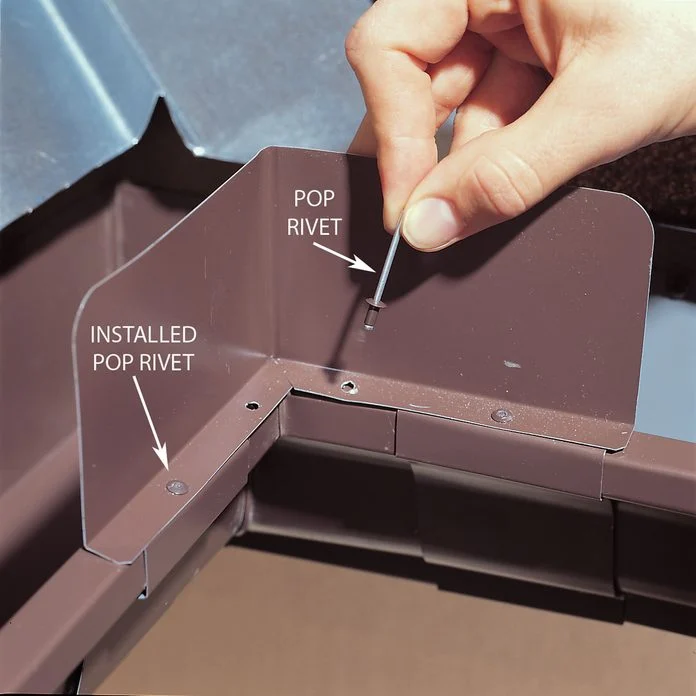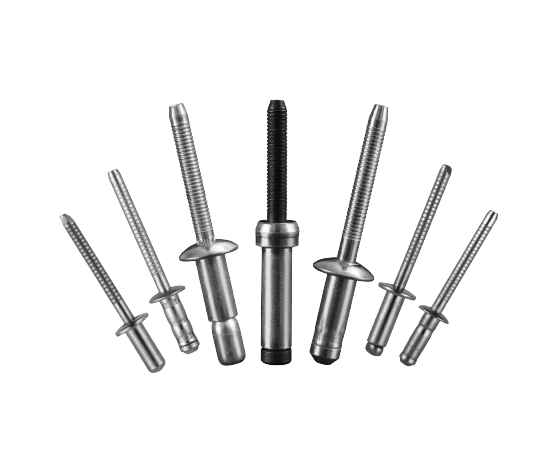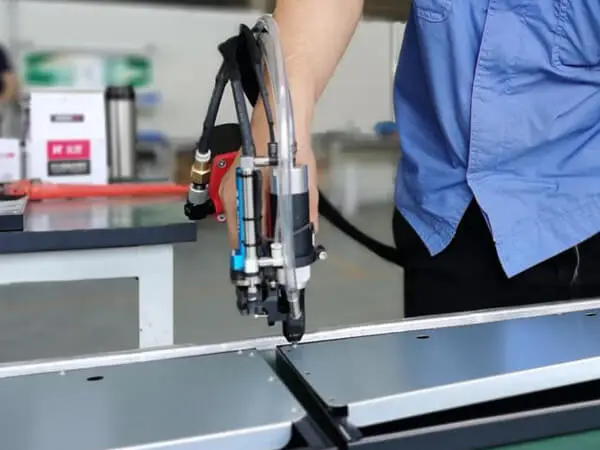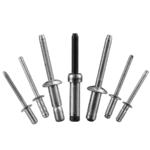Home » 归档于 eric@world-rivet.com » 第5页
How Does a Rivet Gun Work?

Rivmate Fastener
Top Rivet and Rivet Nut Manufacturer in China
Table of Contents

Rivet guns are known to be the best tool for riveting pop rivets. So do you know “how does a rivet gun work?”Let’s explore it next.
Table of Contents
Rivet guns are the most commonly used tool for attaching rivets. It allows an untrained person to achieve a perfect riveted joint. So, the rivet gun is now the prime choice for various industries.

Rivet guns can save a lot of money during mass production. This includes labor costs and time costs. Rivet guns allow for fast and safe installation of rivets. You don’t need to worry about poor installation at all.
Importance of Using Pneumatic Pop Rivet Guns
Pneumatic rivet guns are used frequently in industrial manufacturing and mass assembly. Pneumatic rivet guns excel in efficiency, precision and quality of work. Here is the importance of using pneumatic rivet guns.
- Increase productivity: Pneumatic rivet guns are driven by compressed air. Greatly reducing the riveting process time. Compared with manual rivet guns, pneumatic rivet guns only need to press the trigger to complete the riveting task. Which greatly improves the riveting speed, suitable for the need for mass production or high-frequency riveting occasions.
- Improve riveting quality and consistency: Pneumatic rivet guns control the riveting force through air pressure to ensure that the pressure and tension of each riveting is constant. Thus realizing high quality and consistency of riveting results. In the aircraft manufacturing, automobile assembly and other precision manufacturing areas. The pneumatic rivet gun can ensure that each rivet reaches the required standard strength.
- Suitable for mass production and complex situations: The pneumatic rivet gun is ideally suited to high intensity and complex production environments, capable of handling a large number of riveting tasks. It can also work in tight or hard-to-reach spaces with high flexibility. It is suitable for assembly line operations due to the simplicity of operation, which requires only a light press on the trigger, reducing the number of operating steps.

Importance of Using Pneumatic Pop Rivet Guns
- Cost savings: Although the initial purchase cost of a pneumatic rivet gun is higher than that of a hand tool, it significantly improves efficiency and reduces labor costs. In the production line, the overall cost is effectively controlled after saving time and labor cost.
- Automatic Waste Disposal Function: Pneumatic rivet guns usually come with a function to automatically collect the rivet mandrels, ensuring that the work area remains clean and improving work efficiency. In assembly line operations, the automatic rivet residue collection feature prevents workers from stopping to clean the workbench, contributing to continuous and efficient production.
How Do a Rivet Gun Work?
A pneumatic rivet gun is a riveting tool that relies on an air source. So how dose a rivet gun work? Let’s explore it together!
1.Compressed Air Drive
The operation of a pneumatic rivet gun is based on compressed air. When the tool is connected to an air compressor, the compressed air enters the air chamber of the rivet gun through pneumatic tubing.
When the trigger is pressed, the compressed air pushes a piston inside the rivet gun backwards, and this piston pulls the mandrel of the rivet through a mechanical system.

2. Pulling the Rivet Mandrel
When the jaws of the rivet gun grip the core bar of the rivet, the pneumatic system pushes the piston to pull the core bar taut. As the mandrel is pulled back, the tubular portion of the rivet tail begins to deform and expand.
This expansion process creates an expanding head at the end of the rivet that tightly clamps the material being joined between the cap and the expanding portion of the rivet.
3. Pulling off the Rivet mandrel
Once the rivet mandrel has been tensioned to a sufficient force, the rivet gun automatically pulls the excess mandrel off at a predetermined break point. Typically the core bar of a rivet is designed with a predetermined break point where the core bar breaks leaving a solid rivet when the tension reaches a set value.
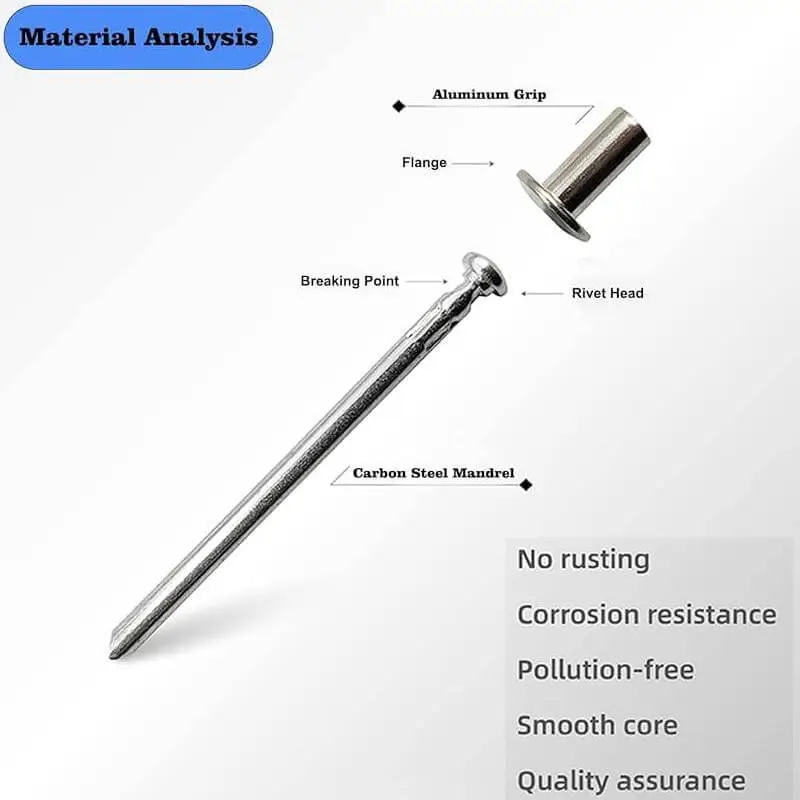
The broken mandrel is automatically collected by a waste collection system inside the rivet gun, eliminating the need for manual cleanup by the operator.
4. Completion of Riveting
After pulling off the mandrel, the rivet gun releases pressure and the piston returns to its original position, ready for the next riveting operation. At this point, the rivet has been firmly secured to the material and the two parts of the material are tightly joined together by the rivet.
Once the riveting process is complete, a new rivet is simply inserted and the next riveting can take place.

Contact Our Engineers Today
We provide you with high quality rivets, including customized services.
Steps of Using Air Pop Rivet Guns
Although a pneumatic rivet gun is very simple to use, the following steps need to be followed in order to achieve the best riveting results:
- Before use, make sure the pneumatic rivet gun is in good condition. Check whether the air pressure interface, jaws, nozzle and other parts of the tool are intact, whether the air source is normal, and make sure that the tool does not have any damage or wear.
- Connect the pneumatic rivet gun to an air compressor and make sure the air supply pressure meets the requirements of the tool (typically between 6-7 bar or 90-100 PSI). Always use a pneumatic hose for connection and check the sealing of the fitting to avoid air leakage.
- Insert the mandrel of the rivet into the nozzle of the rivet gun, making sure that the jaws clamp the mandrel.
Following Steps
- If required, select the appropriate nozzle diameter to ensure it matches the rivet.
- Ensure that the material to be riveted has holes drilled in it of a suitable diameter, slightly larger than the diameter of the rivet, to ensure that the rivet can be inserted smoothly. Check that the edges of the holes are smooth to avoid material damage during riveting.
- Insert the rivet into the hole in the material to be riveted, making sure that the cap is tight against the surface of the material and that the shank passes through the material.
- Tap the trigger of the rivet gun and the pneumatic system will pull on the mandrel, causing the end of the rivet to expand and hold the material in place.
- Check that the expanding head of the rivet should be intact and without visible deformation or irregular expansion.
- Disconnect air supply and store tools.

FAQs
What Accessories Come with a Pneumatic Rivet Gun?
The accessories that usually come with a pneumatic rivet gun include:
- Different sizes of nozzles
- Pneumatic connectors
- Lubricating oil
- Replacement seals and o-rings
Are Pneumatic Rivet Guns Suitable for Mass Production?
Yes, pneumatic rivet guns are ideally suited for large-scale industrial production. Especially in automotive, aerospace, construction and other applications where fast and high volume riveting is required, pneumatic tools can significantly increase productivity and maintain consistent rivet quality.
How to Troubleshoot Common Problems with Pneumatic Rivet Guns?
Some common failures and solutions include:
- Rivet can not pull off the mandrel: check whether the pressure of compressed air is enough, make sure that the nozzle is not worn and the adapter size is consistent with the rivet.
- Air leakage from pneumatic tools: check if the pneumatic joints and O-rings are sealing well, and replace worn parts if necessary.
- Inconsistent riveting results: air pressure fluctuations or worn internal parts may be the cause, check the inside of the tool and perform maintenance.
Order High Quality Pneumatic Pop Rivet Guns from Rivmate
Pneumatic rivet guns can drastically improve your work efficiency. If your project riveting work is heavy, then pneumatic rivet gun line is suitable for you!
Rivmate is the top blind rivet manufacturer and pneumatic pop rivet gun manufacturer in China.If you want to buy high quality pop rivets and pop rivet guns.please contact us!






















